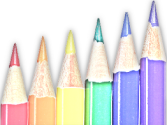Investigating Motion, Forces, and Energy Lab Book
Investigating Motion, Forces, and Energy Lab
Book
Grade Level(s): 8
Key Words: Motion/Speed/Distance/Graphs
Developer(s) Name: Donna Moulton
School: Lake Braddock Middle School
Approximate Time Frame: 2 periods-1 for experiment, 1 for computer lab
Materials/Equipment
Needed:
Description of Lesson (includes context):This lesson will
be used as an assessment after completion of the first two labs
Graphing Your Motion
- What is the objective of this lesson? Create and interpret time/distance and speed/distance graphs utilizing computer technology.
What will we examine as evidence of students' knowledge and/or skill?
What exactly will the students and teacher do during the lesson?
- You are to conduct an experiment similar to the one we just
completed in Keep On
Truckin'. You are to use two of the items you brought from home, i.e. two different
trucks, cars, balls, etc. - Measure the time it takes for these items to travel 5 meters.
Calculate the average
speed. In the next class period, you will make a distance/time graph on the computer
for these two items. - Measure the time it takes the items to pass each 1.0 m mark on
the runway. Calculate
the average speed at each interval. In the next class period, you will make a graph
comparing the average speed of the items to the distance at each marker. - You will make two graphs using the program designated by your teacher.
- You will write a conclusion explaining the results of your experiment and graphs.
- You will import the two graphs into the document with your conclusion.
- Before doing this assessment activity, students should have
completed the first two labs
in the Investigating Motion, Forces, and Energy Lab Book.The same
equipment set up can be used to do this activity. They should have constructed and
discussed the graphs for both of these lab activities. Several reinforcement activities
(graphing, time/distance, speed/distance graphs) from the textbook should also be done
prior to this activity. - To evaluate the products from this activity, use the rubrics
for Graphsand Conclusions
provided in the Investigating Matter and Energy Teacher's Guide. - Graphs can be made using either ClarisWorks or Graphical Analysis.
What options in presentation(s) and/or response(s) are suggested in order to provide the opportunity for all students to demonstrate achievement of the benchmark(s) and indicator(s)?
Students could create spreadsheets and then make graphs from their spreadsheets. Students who need more reinforcement could create graphs by hand on graph paper, then go to the computer lab to do their final copies.

